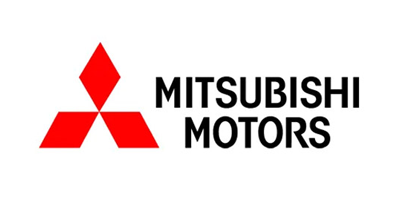

Automatic Weapons Market by Caliber (Small Caliber, Medium Caliber, Large Caliber), by Product (Automatic Rifle, Machine Gun, Automatic Launchers, Automatic Cannon, and Gatling Gun), By End-User (Land, Maritime, And Airborne), and by Region (North America, Europe, Asia-Pacific, and Rest of the World) - Market Size, Share, Trend, Forecast, Competitive Analysis, and Future Outlook: 2022-2028
Base Year: 2021
Historical Data: 2016-2020
Market Highlights
In 2022, the automatic weapons market was valued at US$ 7.65 billion globally. It is anticipated to expand at a compound annual growth rate (CAGR) of 8.4% from 2022 to 2028, reaching US$ 13.5 billion. It is believed that COVID-19 will have less of an effect on market revenue overall. However, the sector was briefly affected by production obstacles in 2020 and 2021.
Combinations of fully and semi-automatic guns are considered automatic weapons. When ammunition is present in the chamber or the gun trigger is depressed firmly, the automatic weapons trigger sets constantly. Due to a variety of factors, automatic weapons have started to change defense tactics and how war is fought.
There is a strong desire for market expansion worldwide as a result of the growing number of cross-border conflicts. Conflicts between nations, such as those involving Turkey and Cyprus, India and Pakistan, and Russia and Ukraine, have led to regional conflicts and an overemphasis on cutting-edge weaponry. Regional conflicts force states to spend enormous sums of money on the acquisition of cutting-edge weaponry, which fuels the expansion of the automatic weapons market worldwide.
The need for precise strike weapons reduces enduring anxiety, and the global automatic weapons market is expanding as a result of collateral security harm sustained in many unstable nations. Furthermore, a number of countries' defense budgets have been steadily rising, and increased spending on technology upgrades is one of the main drivers driving the market expansion. For instance, Northrop Grumman Corp. and the U.S. Navy inked a deal in September 2021 for the production of the AGM-88G Advanced Anti-Radiation Guided Extended-Range Missile. The growth of the automatic weapons market worldwide is impeded by prohibitive acquisition costs and adverse regulatory policies. However, throughout the projection period, the growing frequency of terrorism and the standardization of automatic weapons create profitable chances for the market participants.
The market expansion is ascribed to several developments in automatic weaponry in the defense sector in recent years. Among them are:
1) General Dynamics Corp. was awarded a US$ 883 million contract in February 2020 to enhance the U.S. army's training program. The agreement calls for the development of joint expeditionary training systems as well as individual and major combat training facilities for the Army.
2) Israel Aerospace Industries Ltd. was awarded a US$ 240 million contract in February 2020 to replace the wings of T-38 trainer aircraft.
3) In January 2021, MBDA and the UK Ministry of Defense inked an agreement for MBDA to outfit its F-35B combat jets with a new cruise missile that is network-enabled, called the tiny spear 3. The contract had a value of about US$ 750 million.
4) Lockheed Martin and the US Navy and Air Force inked a $414 million contract in February 2021 for the supply of LRASM, an anti-ship, precision-guided standoff missile modeled after the successful combined air-to-ground standoff missile.
5) The largest demonstration at the company's facilities since 2014 was concluded in May 2022 by the defense firm Saab and its armed forces partners with a two-day series of live-fire demonstrations, including firings at night. After years of stabilizing both Russia and the coalition, Sweden has formally requested to join NATO, which has shifted attention to the country's defense sector.
6) One useful feature of the Saab-designed weaponry is that the rocket motor doesn't ignite until the weapon has taken off. Due to the system's "scoot and shoot" capability, soldiers may be able to activate the weapon without disclosing their location, which is an advantage over many older smart weapons and ATGMs (Anti-tank guided mission).
Market Segment Analysis
The automatic weapons market is divided into two segments based on product type: automatic rifles, machine guns, automatic cannons, automatic launchers, Gatling guns, and others. In 2021, the segment with the biggest market share was automatic rifles. Automatic rifles fire continuously until the last round of ammunition is used; self-loading or semi-automatic rifles, on the other hand, require the user to pull the trigger after each shot. When it comes to automatic rifles, semi-automatic rifles are preferred since they are more precise.
By end-user, the automatic weapons market is divided into three segments: maritime, land, and airborne. Due to the rapid expansion of armed forces around the world and the rise in the acquisition of automatic weapons by land forces, the land sector is predicted to show steady demand suddenly. The primary reasons for the expansion of the land-based automatic weapons market are the requirement for interconnected warfare systems, the necessity to protect soldiers in scenarios akin to war, the growing significance of close combat systems, and the need to upgrade existing armored platforms. Since GPS-guided missiles are increasingly needed to perform well even in inclement weather, airborne automated weapons are expected to grow at the fastest rate during the projection period.
During the projected period, North America is expected to maintain its highest market share in the automatic weapons market. The biggest market share is mostly attributable to the substantial budget and spending on defense that is set aside to bolster the armed forces. The money is mostly being spent on new weapons and defensive fleet upgrades. The presence of significant market participants also contributes to the expansion of the North American industry.
At the same time, the automatic weapons market is expected to develop at the quickest rate in the world in Asia Pacific. The defense forces' increased need for automatic weapons and the rise in overall military spending (especially in China and India) are the main causes of the explosive expansion. Greater security and defense in nations like China and India are creating enormous potential opportunities for the Asia-Pacific automatic weapons market.
Key Players
The market for automatic weapons is highly competitive worldwide. The state of the sector and government assistance have a direct impact on the companies' growth. Based on their quality and level of penetration in both target and emerging markets, these companies set themselves apart with their smart weapon products. Additionally, a few recent large mergers and acquisitions in the sector have had a big impact on the competitive dynamics. As an illustration:
In June 2018, Rafael unveiled "firefly," a tiny lingering projectile. The tiny ammunition can be used by alighted infantry and might be used in conjunction with an electro-optical accuracy incorporation kit to provide precise assistance to surface-to-surface multiple rocket launch systems.
2) Germany's GIWS, a partnership between Rheinmetall and Diehl Defence, announced in January 2019 that it would revive the SMArt 155 artillery projectile in 2022–2024.
3) Raytheon Technologies Corp. sold the Collins Aerospace Military Global Positioning System to BAE Systems in July 2020. With the addition of Raytheon's anti-jamming and anti-spoofing technology, which enables accurate navigation across several defense missions, the arrangement expands BAE Systems' present electronic systems business portfolio.
In the global automatic weapons market, the following companies are prominent players:
Israel Weapon Industries; BAE Systems; Colt's Manufacturing Company LLC; General Dynamics Corporation; Northrop Grumman Corporation; Heckler & Koch AG.
Automatic Weapons Market Scope:
| Report Data | Automatic Weapons Market |
| Automatic Weapons Market Forecast Value 2028 | 13.5Billion |
| Automatic Weapons Market CAGR 2022 - 2028 | 8.4% |
| Automatic Weapons Market Forecast Period | 2022 - 2028 |
| Automatic Weapons Market Base Year | 2021 |
| Regional Scope | North America, Europe, Asia Pacific, South America, and Middle East & Africa |
| Key Companies Profiled | Israel Weapon Industries; BAE Systems; Colt's Manufacturing Company LLC; General Dynamics Corporation; Northrop Grumman Corporation; Heckler & Koch AG.. |
| Key Segments | By Product By End-User By Region |
| Report Coverage | Market Sizing, Market Forecasting, Market Dynamics, Market Trends, Market Development Analysis, Market Share Analysis, Regional Analysis, Competitive Positioning, Competitive Benchmarking, Competitive Landscape, Company Profiling, Regulation Analysis, etc. |
Get Your Report Customized
Further segmentation of the market on the basis of type, application, end use, product, technology, method, process and any other segment depending on the market
Segmentation on the basis of any specific country or region
Any segment can be classified on the basis of application
Application segment can be further divided on the basis of companies
The companies profiled are not limited, we can incorporate additional companies of your choice
We can split the company market share on the basis of product, application and region
Report can be prepared for any specific country/region/segment
Customers can be added on the basis of regions and countries
Choose License Type
Get in touch with us
Why choose us
Proactive
We manage our resources 24/7 to identify issues and address them before they become problems
Quality & Reliability
We are committed to providing reliable and highly accurate data with an excellent quality control system
Global Outreach
6 Major regions and 40+ countries level analysis accomplished
Competitive Pricing
Our pricing strategy is highly competitive in the market, without compensating on the quality and the timeline of project delivery
UP TO 30 % OFF
Single User License
10% OFF
Team License
15% OFF
Corporate License
30% OFF
Book before: 31st May 2024
Some Facts About The Research Intellica
800+
Reports Published Per Year
2500+
Consulting Projects till date
125+
Fortune 500 Clients
1600+
Analysts and Contract Consultants


































